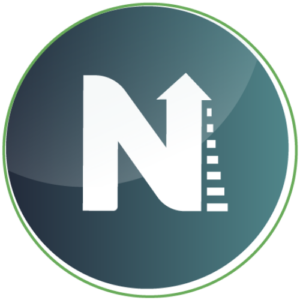The Sales Engine and How We Build It. The Basics.

The Sales Engine and How We Build It. The Basics.
At a certain point in consulting, you start realizing you’re doing the same thing over and over again, even if you didn’t mean to. You see that most companies need the same things, to different degrees.
So in an effort to make my own life easier, and to provide you with something that may be valuable as you look at your company’s health and growth, here are the basics as I see them.
This crosses all the industries of people who read my stuff, from SaaS to real estate to distribution to insurance to services.
Know Thy Customer
The ideal client profile: Too many of us are trying to be too many things to many potential customers. We have to know who the real customer is, and as specifically as possible. The better we can articulate our customers by title, industry, business stage, and geography, the better we can articulate their hurts, wants, frustrations, and goals. And that, sports fans, makes marketing and selling easier.
The offer: I’m not someone who meddles with the product, and I don’t specialize in fixing an offer unless the fix is a flashing sign. But I know that for many of us, regardless of the product or service, the easiest way to reduce friction in sales is to improve the offer. It needs to be more appropriate and compelling for our ideal customer, and that likely means a little different from what your competitors are hocking.
The message: this is easier than fixing the offer, but it requires an intimate knowledge of our ideal client’s thought life. If we can nail the message, we’ll be reading their mail, and they’ll know it. Good messaging cuts through a lot of the clutter when you’re in a hyper-competitive market because everyone else is talking about the same thing: features, benefits, the history of their firm, blah blah blah. And the buyers can’t tell them apart. If you want help with messaging, I’m pretty good. Hit me up.
But wait – there’s more.
Gotta Get Leads
Traffic: I don’t care where you get it, but you have to have a plan. For some, it’s cold calling. For others, it’s a content play. Some, like attorneys, play the PPC game well. Others use direct mail. Some I work with have an established referral-generating machine we build with a little discipline, some tech, and a CRM. (Let me know if you want to see how we do that.) The method doesn’t matter, though, as much as your ability to consistently pull the lever.
Pro tip: if you’re a small business owner driving leads, build around your own strengths and interests. For instance, I write. You can scale beyond your giftings later, but for now, start with what comes naturally.
CRM: It’s 2022, about to be 2023. Get one. Set it up. Put leads, contacts, and accounts in there. All the time. Measure leads by source. Whether it’s you selling or a team (who will ask, “Do you want me selling or putting stuff in the CRM?”), the CRM is the path to a future where you sell more, and faster. Just. Get. Started. Do you want to sell this thing someday? That CRM will be a key to anyone doing a valuation.
Measure Stuff
Metrics: Again, it’s about to be 2023, so we have to track these. The guy from 1980 who says, “All I need to know is sales numbers” won’t make it with today’s competition. Leads by source. Conversion rates by rep, product, and customer type. Conversions by stage. Effectiveness of activities. When we work with clients, if they have this, we can quickly identify profits waiting to be had, as well as paths to more. It’s not magic, just statistics.
Pipeline: I once wrote about how the CFO doesn’t believe the forecast. The pipeline that leads into that forecast is often laughable. But very common. A great head of sales I know, when reviewing his team’s pipeline, will often say, “That’s not real, so take it out.” He knows what an opportunity is and holds his team to account for it.
A pipeline needs to be staged, and the stages need to be clear. They need to be defined by milestones, not events (i.e. demo). The best way to evaluate the pipeline is to ask what the prospect said because that’s different than what a seller wants to happen.
The pipeline also needs to be measured, and after a year, we should know that X% of deals at a certain stage advance to the next. This enables us to identify how much pipe we need to hit our goals.
Do Hard Things
Coaching: Sigh. We could go on about this all day. But we’ll keep it brief. Most people selling aren’t coached. Period. Yes, it’s sort of monotonous. No, it’s not sexy. It isn’t often about strategy. Yes, it has to keep happening all the time. No, it never really stops. But you know what? With some metrics, we at least know where to look to help improve conversions by stage and to close. So small wins – for individuals and their managers – can be attained quickly.
Coaching is the deliberate development of skills. It’s not telling, but facilitating discovery, and then reinforcing the lessons… and guess what? It involves a lot of practice through role-play and simulation. That’s where it gets home.
Accountability: First, forget all the talk of, “I hire adults, and if they want to make money, they’ll do the work,” and remember you live in the real world where people need a little nudge. Executives set deadlines for themselves for a reason. Second, start with the minimal required activity someone needs to engage in to drive leads or manage an opportunity. This alone creates a 10% lift in almost any organization because it immediately builds a pipeline.
The Human Element
Goals: People have them. Managers have to know what they are. And yes, I’m talking about outside of work, because life exists outside of 9-5, or 8-6, or 7-7. Someone’s work needs to be tied to reaching their goals. This brings us to….
Comp: Sometimes, all you need is to tie comp to the right things. What are those? Usually margin and/or new customers. That solves a lot of comp issues, for everyone. With a little accountability and coaching, we’re off to the races. But we have to get this close to the pin.
Talent: A friend, Corey Bell, once said, “I look for skill, will, and fit.” I err on the side of will and fit because if they have those, I can get them up the skill curve if I will, well, coach. (Ahem.) Special talent is hard to find and rare. So I emphasize building everything else around the talent to reduce the burden of finding Superman or Wonder Woman.
Great coaching. Metrics. Accountability. An amazing offer. Tight messaging with a clear ICP. Serious lead flow. Ironically, once you have all those that make great talent less important, it’s easier to attract great talent.
Skills and Training: I’m pretty good at training people to sell because, after 15 years, I’ve seen a lot, from industry to company size and stage to the people selling. But the stuff above – has to come first if you want training to work, or you want the team to start achieving more. Full stop.
I’m not downplaying the importance of developing people. It’s crucial, especially in a competitive market or with investor pressures. Managers need to define the skills their people must be excellent at to win.
For any industry, it’s qualifying, so the rep can build a case for why the prospect should choose him or her. It’s also understanding decisions and getting money. Prospecting helps because any seller who can create her own leads will never go hungry.
I’m not sure what else you specifically need in your company, but it’s worth making a list. Then train on those. And as a manager, coach what’s been trained. Training can stop, but coaching can’t. Ever.
But if you want to really set up a sales org to thrive, it’s constant work, like Phil Stutz says.
It Ain’t Easy
But it’s not complex, either. The comp plan is usually the hardest one to nail, but it’s doable. The rest just requires focus and attention.
If you’re looking at all I’ve written and thought, “That’s too much,” consider that this is the basics. We didn’t get into mentoring people, installing RevOps, selecting tools, the president’s club, or territories. It’s a lot. This is why I encourage anyone who can survive without a sales team, to do so. It never stops.
If you’re wondering where to start, use this list. Grade yourself or your org in each area.
Have a question about some elements of that list? Shoot me a note.
Want help putting it all together? Again, shoot me a note, and we’ll see if I can.
Here’s to 2023!



